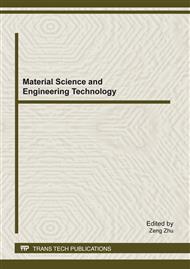p.242
p.246
p.252
p.259
p.265
p.271
p.277
p.281
p.287
Research on Improving Take-Off Characteristics of Fly Wing with a New Constitution
Abstract:
The take-off control of UAV with fly wing layout is limited by its relatively lower pitch moment. This paper gained the state parameters of a few groups of taking off model by means of numerical simulation. The influence of different models on take-off distance, take-off angle of attack (AOA), take-off safe speed and c.g. location was then analyzed. Based on the analysis, a new fly wing constitution was designed and the corresponding take-off control scheme was suggested as well. Finally, the flight test results shows that this fly wing constitution can gain better take-off control characteristics.
Info:
Periodical:
Pages:
265-270
Citation:
Online since:
February 2012
Keywords:
Price:
Сopyright:
© 2012 Trans Tech Publications Ltd. All Rights Reserved
Share:
Citation:


